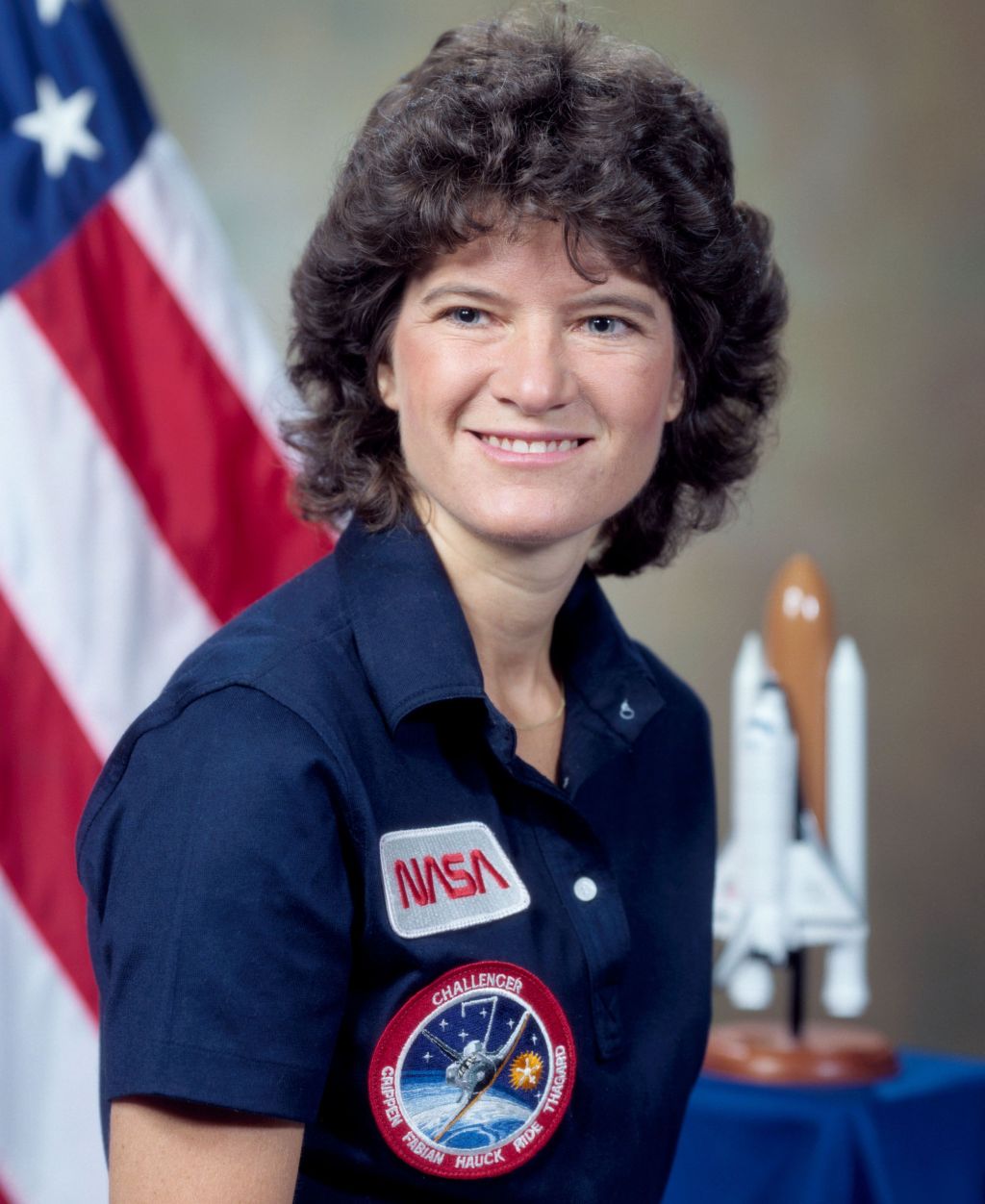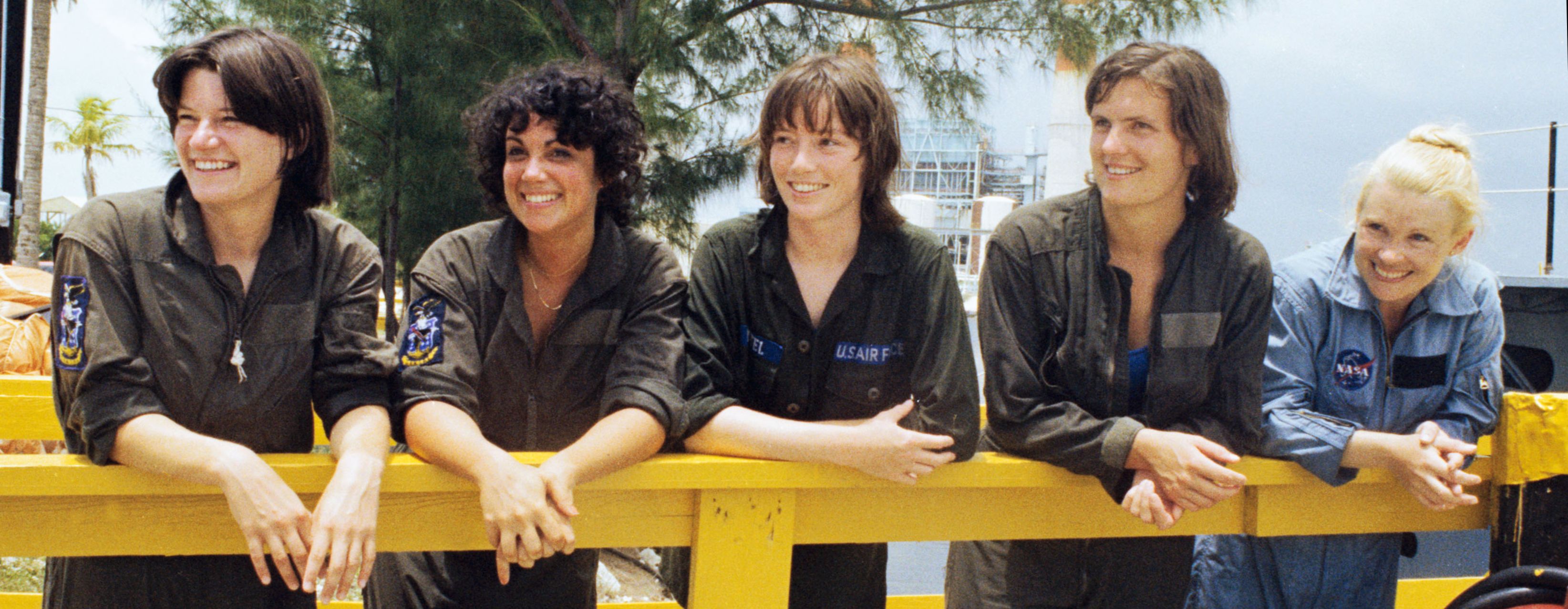The first American woman in space inspired thousands of girls dreaming of a career in science.
-
Winter 2020
Volume64Issue1

Before becoming the first American woman in Space, Sally Ride got a PhD in astrophysics from Stanford and subjected herself to five years of astronaut training at NASA. Navy test pilots took her on gut-dropping, 600-mile-per-hour flights 39,000 feet in the air. (Her flight instructor called her the best student he'd ever had.) Ride became an expert at· maneuvering a 900-pound robotic arm that would be used to pluck satellites from the sky. She became fluent in control panel switches and circuits, getting to know the 1,800 or so on the orbiter's control panel.
Ride endured long days of training with singular focus. In another life, Ride would have been a professional tennis player or a Nobel Prize winner — both were within the realm of possibility — but in this one she reached the top of a stack of 8079 other space program applicants. She was an ambitious scientist and as soon as her 1983 mission was announced, an instant sensation.
Ride landed on magazine covers and into talk-show opening monologues. After years of impossible hurdles thrown up by NASA to prevent women from flying (no, but seriously: the agency's push for women and people of color was summarized as a "near total failure" in 1973 by the person in charge of it), Ride became living proof that gender wasn't the characteristic that would get one booted from the application pool.
She handled space training with ease. Making it through the gauntlet of inane press questions may have been more of a challenge. Would or wouldn't she wear a bra in zero gravity? Did she cry over her mistakes? Questions about how her gender would affect the flight were typically answered with some flatly delivered variation of the following: "one thing I probably share with everyone else in the astronaut office is composure." Or, as she reminded one reporter, "Weightlessness is a great equalizer."
Ride was unflappable. Her strategy the morning of her first launch in 1983 was to approach her preparations as if they were mechanical obligations, so as not to get too overwhelmed by the excitement. The astronaut had a knack for tamping down emotion — even if it meant taming the ultimate thrill. When reporters asked, Why did you want to go into space? What was it like looking back at Earth? Ride's answers were sometimes flat. I didn't dream about going to space, I'm not sure why I applied, and I can't describe what it was like to look back on Earth. To say the view from space was not the same as seeing a picture of it was, at least in the beginning, as eloquent as she got.
Ride was better with the concrete, like learning a task or memorizing a text. During her time as an undergraduate at Stanford University, while majoring in both English and physics, Ride and her doubles tennis partner playfully battled each other over who could more seamlessly work obscure Shakespeare quotes into a conversation. As she rose through the academic ranks, Ride recalled her physics advisor saying, "Well! A girl physics major! I've been waiting to see what you'd look like — I haven't seen one for years!" As would become a common theme, Ride was the only one.
Ride went up in the space shuttle twice. The image of her floating through the cabin, snagging a bag of cashews with a halo of curly brown hair, inspired tremendous hope for girls dreaming of going into science. Her presence brought some admirers to tears and compelled others to act.
When an advertisement for college financial aid services displayed a boy in an astronaut outfit dreaming about his future, Ride's father sent the company a strongly worded letter complaining about the “unconscious (I assume) bias we have in education .... As a parent of the first US woman astronaut, I know firsthand that girls also aspire to math and science and we should encourage her to 'get America's future off the ground.’”

Ride was more than just the first woman in space. She served as an essential voice of reason — twice — when NASA most needed it.
On January 28, 1986, Space Shuttle Challenger exploded seventy-three seconds after liftoff. Seven of Ride's colleagues died in the accident. Spaceflight up until then had always been the stuff of dreams. But NASA's push for rapid-fire missions at the expense of safety sacrificed lives. The agency needed to figure out what went wrong and how it could recover.
Of the thirteen people brought in to sit on a presidential commission to review the accident, Ride was the only current NASA representative. She was also responsible for gathering some of the most shocking information regarding the agency's missteps. Ride helped hold her employer accountable. The report concluded that NASA had forced through too many flights, ignored warnings that weather conditions might put astronauts in danger, and was entirely too cavalier about sending humans into space. The Nobel Prize-winning physicist Richard Feynman, who was also a member of the panel, claimed that NASA's jam-packed flight schedule was akin to playing Russian roulette. Ride told a reporter that she wouldn't feel safe getting on another flight right away.
The explosion grounded the shuttle program for two years while NASA regrouped. With more rigorous safety measures put in place, the organization needed to map out a plan to win back the public's trust, while also making important decisions about the kinds of missions that would take the agency forward. NASA put Ride in charge of coming up with a refreshed list of mission recommendations.
For a year, Ride tapped young NASA employees to brainstorm the agency's next move. In her final report, she weighed four recommendations: sending humans to Mars, exploring the solar system, creating a space station on the moon, and the one she was most passionate about, organizing a mission to Planet Earth. Internally, the organization favored big projects that ignited the imagination. The longtime NASA heavyweights guard wanted a mission to Mars; Ride argued for an approach more beneficial to the planet. Mission to Planet Earth's goal was to use space technology to understand Earth as a total system, to learn how man-made and natural shifts affect the environment.
"This initiative," she wrote, "directly addresses the problems that will be facing humanity in the coming decades, and its continuous scientific return will produce results which are of major significance to all the residents of the planet."
At a meeting of the Senate Committee on Commerce, Science, and Transportation, a senator asked Ride to prove how her preferred mission would be more than just "a better weather report."
Following the meeting's conclusion, the same senator gushed that the initiative was "the most challenging and exciting concept that this committee has seen in quite some time."
Finally, Ride had an answer to those questions about seeing Earth from space. The astrophysicist in her saw a fragile planet. Her greatest legacy is convincing NASA that Earth is worth trying to protect.
Essay adapted from the book Headstrong: 52 Women Who Changed Science — and the World by Rachel Swaby. Copyright © 2015 by Rachel Swaby. Publishing by Broadway Books, an imprint of Random House, a division of Penguin Random House LLC. All rights reserved.

